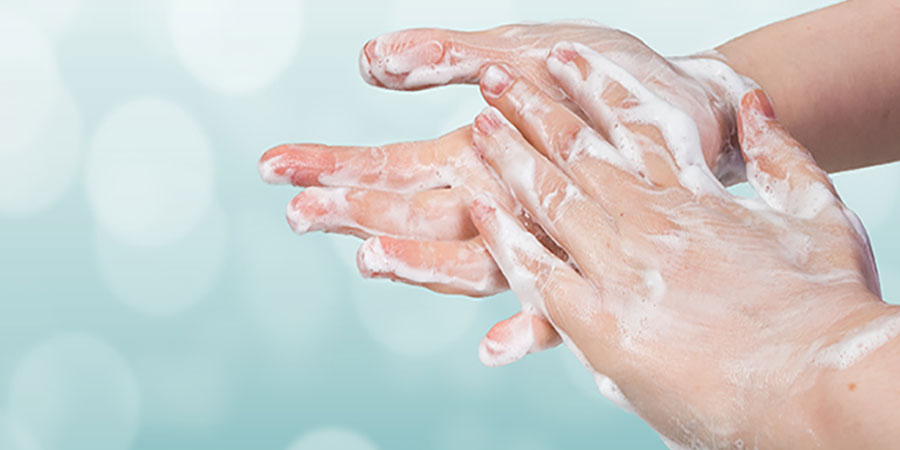Clean hands save sight

Handwashing is a simple yet effective way to curb contamination, but evidence suggests as many as half of contact lens wearers aren't frequently practicing good hand hygiene, upping their infection risk.
Published in the journal Contact Lens and Anterior Eye, a literature review details how inadequate handwashing and hygiene are significant risk factors in the development of microbial keratitis (MK) and corneal inflammatory events (CIEs) among contact lens wearers. Such analysis underscores the need for physician oversight and patient education in prescribing contact lenses, as well as identifies a modifiable risk factor that could be better addressed to augment contact lens wearers.
Although contact lenses are a safe, effective vision correction option for nearly 45 million Americans, there are myriad reasons why all contact lenses—whether corrective or decorative plano—are classified as medical devices by the U.S. Food and Drug Administration (FDA), and sight-threatening infections are one. In fact, as many as 1 in 3 contact lens wearers experience a complication requiring further care and 1 in 5 cases of contact lens-related infections result in corneal damage. Chief among those complications are MK and CIEs, of which proper hand hygiene could help curb.
"Intuitively, contact lens wearers should be more compliant than nonwearers with regards to hand washing, as they have been instructed on lens care, insertion and removal procedures, which include the importance of hand hygiene," authors of the University of Waterloo paper note.
"However, there is substantial evidence that many contact lens wearers are not compliant with hand washing procedures, up to 50% in some reports, and this increases the risk of microbial contamination of contact lenses, which in turn may increase the risk of developing MK and CIEs."
Yet, this disconnect isn't for a lack of knowledge. A 2017 CooperVision-sponsored survey of 950 contact lens wearers reported that though 88% of respondents believed bacteria on fingers could transfer to eyes during lens insertion, 41% still didn't wash their hands prior to insertion. Likewise, plenty of studies illustrate this foundational-level evidence. For instance, researchers cited a 2017 study that found 90% of disease load on daily disposable lenses were associated with wearers who failed to wash their hands, while a 2016 study showed the risk of MK was 13 times higher for wearers who didn't wash their hands.
While it's "virtually impossible" ensuring patients' hands and fingers are sterile prior to lens handling, hand washing with soap and drying with a clean towelette are still the best recommendations for mitigating pathogenic organisms. So, is it a question of better patient education? Unfortunately, researchers note there's scant evidence to show a correlation between hand hygiene education and contact lens health. But the evidence that is available speaks for itself about the efficacy of hand washing overall.
"This will not come as a surprise to eye care practitioners (and should serve as a useful reminder for their patients) that 'hand washing halts the spread of infection and is effective in preventing the spread of some diseases,'" researchers note, citing the 2015 Global Burden of Disease Study.
Use safe handling
The evidence is there: Clean and safe handling of lenses is one of the easiest and most effective measures contact lens wearers can take to protect their vision. Edward Bennett, O.D., past chair of AOA's Contact Lens and Cornea Section and professor at the University of Missouri-St. Louis College of Optometry, says there's no question that proper hand hygiene minimizes contact lens-induced complications.
In addition to thorough hand washing with non-lanolin containing soap, Dr. Bennett also recommends ensuring any creams or other substances on the hands (notably those including lanolin) are removed, and hands are dried on a clean towel as any residual water can be transferred to the lens and cause infection.
"Most important, however, is that dirty hands can result in a contaminated contact lens and ultimately eye inflammation and infection," Dr. Bennett says. "One of the many important reasons why the eye care professional is so vital to healthy and successful contact lens wear is educating every contact lens patient about what constitutes proper lens care and compliance, including appropriate hand hygiene."
Proper care and compliance are among the many reasons why AOA stresses regular, in-person, comprehensive eye examinations. Seeing a doctor of optometry routinely for comprehensive eye care is important to not only assess patients' vision and update prescriptions but also help identify and lead to a diagnosis of other health concerns.
Read more about AOA's advocacy for greater federal enforcement of contact lens provisions stipulated by the Federal Trade Commission's Contact Lens Rule.
As eclipse edges closer, AOA promotes safe viewing
Doctors of optometry demonstrate their expertise as excitement builds over the April 8 total solar eclipse. AOA President Ronald L. Benner, O.D., urges the public to watch the event “safely and wisely.”
Link between eye examinations and fall prevention in older adults
📽️ Comprehensive eye examinations are among the chief ways of preventing potentially deadly falls in adults 65 years and older, according to the American Public Health Association’s (APHA’s) newly released policy statement. For many people at risk of falling, an annual eye examination could be a lifesaver, the APHA statement says.
‘Inadequate to meet demand’: Report spotlights declining ophthalmology workforce as America’s eye health needs grow
Ophthalmology’s report paints a stark contrast between the two eye care physician workforces as the surgical specialty’s workforce adequacy plummets to second worst in coming decade.